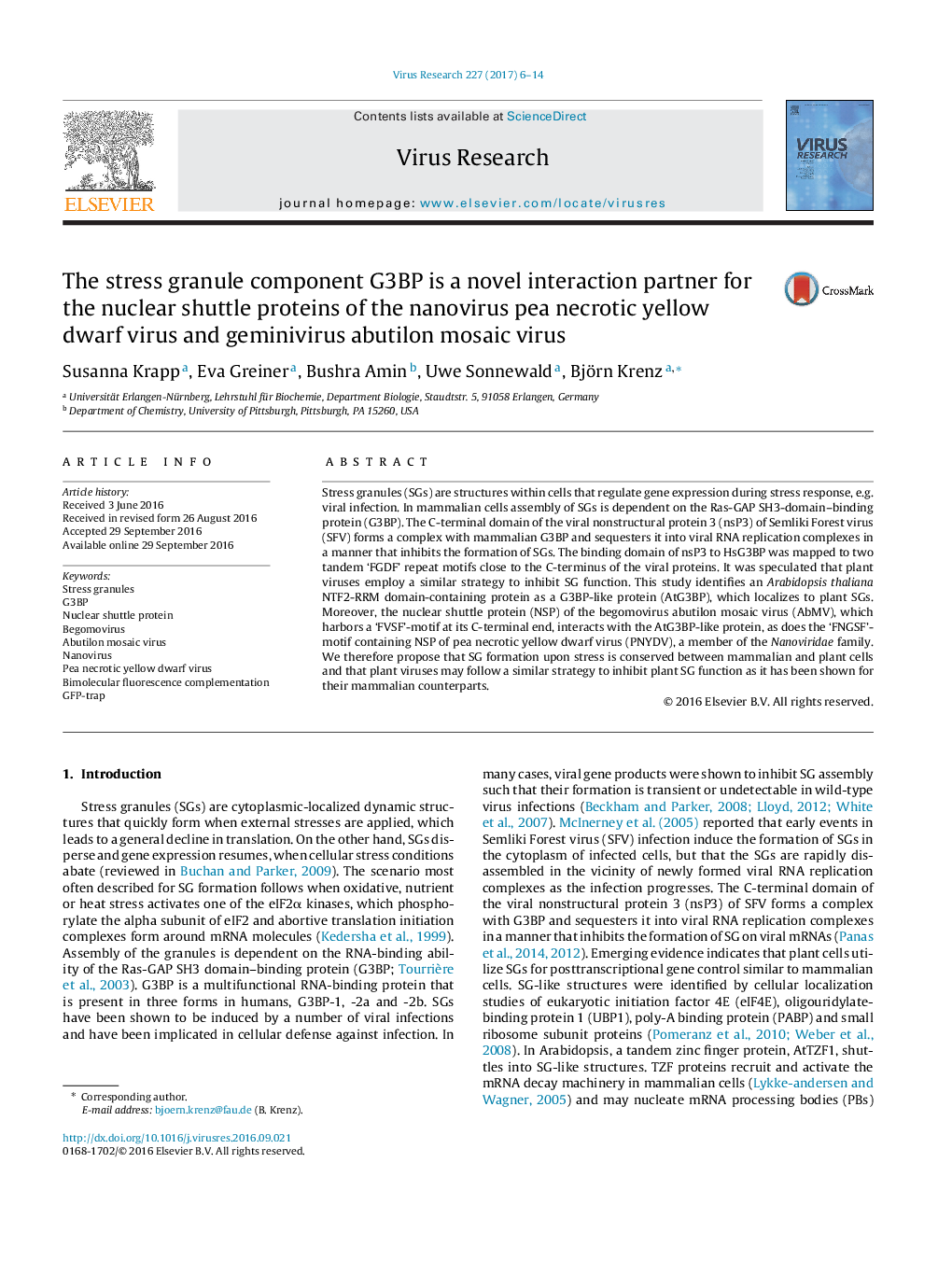| Article ID | Journal | Published Year | Pages | File Type |
|---|---|---|---|---|
| 5675472 | Virus Research | 2017 | 9 Pages |
â¢A plant homologue of G3BP was identified in Arabidopsis thaliana.â¢G3BP-like protein co-localizes with PNYDV NSP and AbMV NSP.â¢AbMV NSP interacts in immune-capture experiments with G3BP-like protein.â¢G3BP-like protein interacts with AtUBP24 in bimolecular fluorescence complementation (BiFC) experiments.
Stress granules (SGs) are structures within cells that regulate gene expression during stress response, e.g. viral infection. In mammalian cells assembly of SGs is dependent on the Ras-GAP SH3-domain-binding protein (G3BP). The C-terminal domain of the viral nonstructural protein 3 (nsP3) of Semliki Forest virus (SFV) forms a complex with mammalian G3BP and sequesters it into viral RNA replication complexes in a manner that inhibits the formation of SGs. The binding domain of nsP3 to HsG3BP was mapped to two tandem 'FGDF' repeat motifs close to the C-terminus of the viral proteins. It was speculated that plant viruses employ a similar strategy to inhibit SG function. This study identifies an Arabidopsis thaliana NTF2-RRM domain-containing protein as a G3BP-like protein (AtG3BP), which localizes to plant SGs. Moreover, the nuclear shuttle protein (NSP) of the begomovirus abutilon mosaic virus (AbMV), which harbors a 'FVSF'-motif at its C-terminal end, interacts with the AtG3BP-like protein, as does the 'FNGSF'-motif containing NSP of pea necrotic yellow dwarf virus (PNYDV), a member of the Nanoviridae family. We therefore propose that SG formation upon stress is conserved between mammalian and plant cells and that plant viruses may follow a similar strategy to inhibit plant SG function as it has been shown for their mammalian counterparts.
Graphical abstractDownload full-size image
